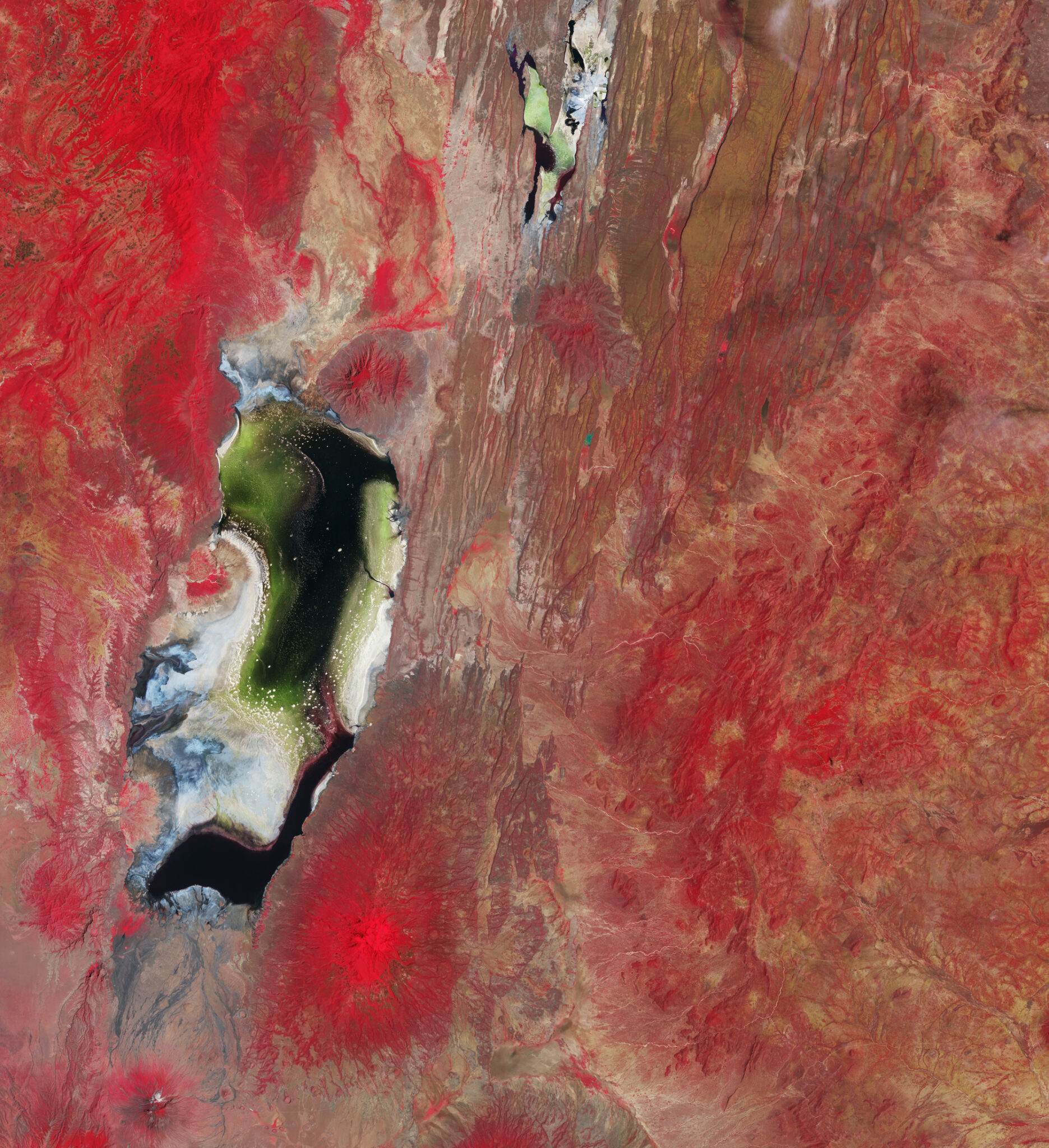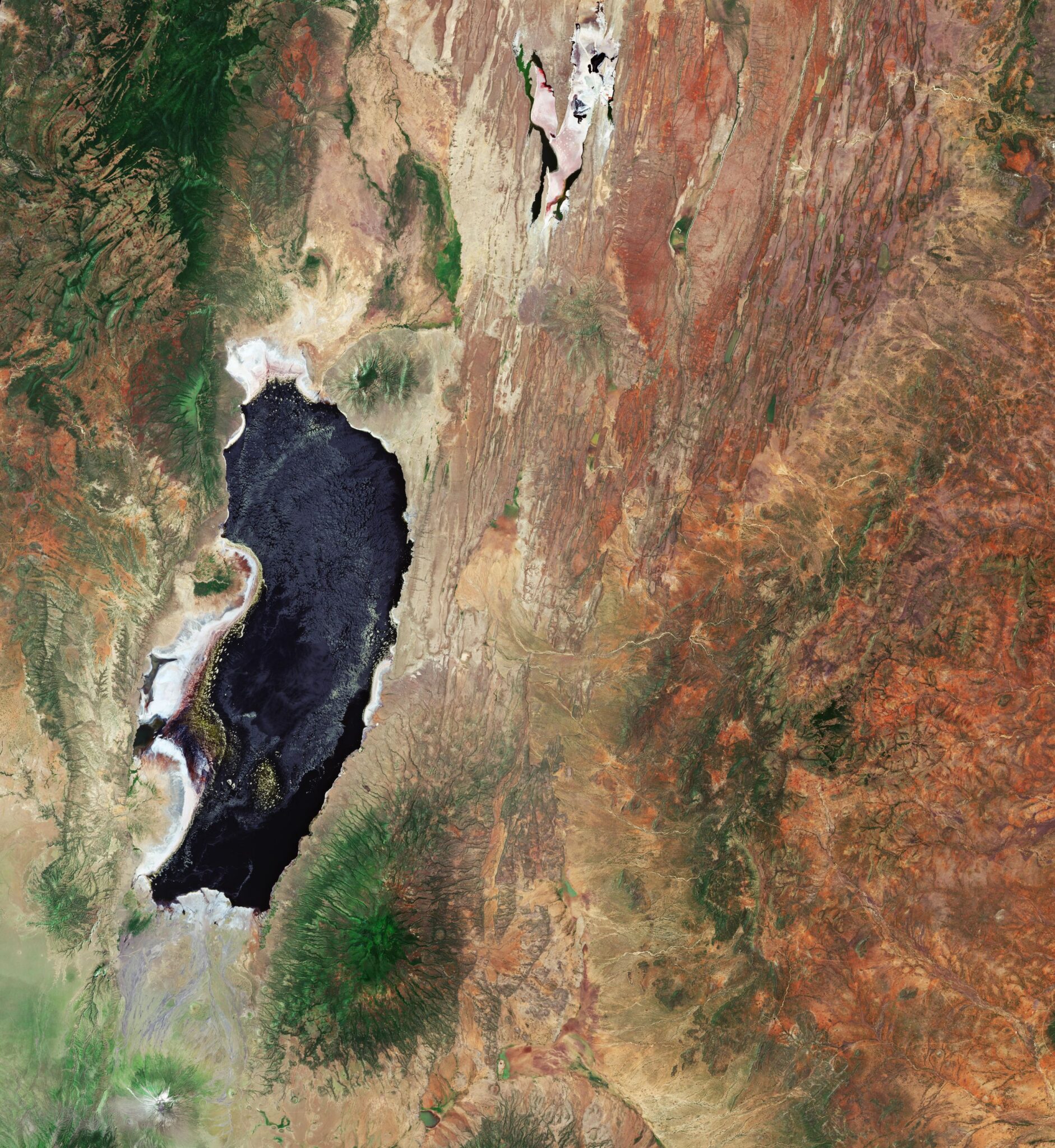Spacecraft have the best opportunities for photographing our Earth from a great height. Equipped with the most modern equipment for photography, they create images of incredible beauty. For example, a recent photo from the Copernicus mission released by the European Space Agency (ESA) shows two salt lakes in East Africa: Lake Natron in northern Tanzania and Lake Magadi in southern Kenya.

The bright colours are due to the processing of the image received by the Sentinel-2 satellite in the near infrared range, which allows you to highlight information that is not available in the usual optical spectrum. This is especially important for identifying plant areas and seasonal algal blooms.
It is noted that the bright white and blue areas along the shores are a mixture of sand, salt and silt. Salt crusts formed as a result of evaporation caused by high temperatures can be seen as white dots on the water.
The larger salt-alkaline lake Natron has a length of 56 km. Its depth is only 3 m. It is a wetland of international importance, because up to 2.5 million flamingos flock here every year. The smaller Lake Magadi is located in a depression in the volcanic rock. Like Natron, it has a high salt content, the thickness of which in some places reaches 40 m.

The Sentinel-2 mission consists of two vehicles and provides data transmission for the European Copernicus program. This project combines information from environmental satellites, as well as air and ground stations, to provide a comprehensive understanding of the state of the Earth.
Earlier we reported on how the Maxar satellite was used to take pictures of penguin excrement.
According to ESA
Follow us on Twitter to get the most interesting space news in time
https://twitter.com/ust_magazine


